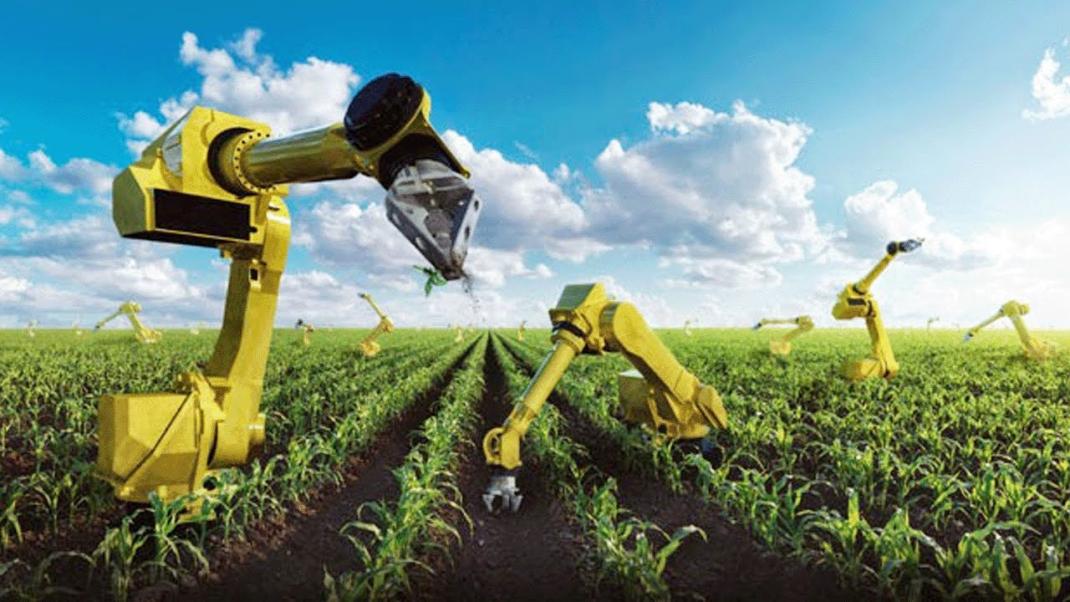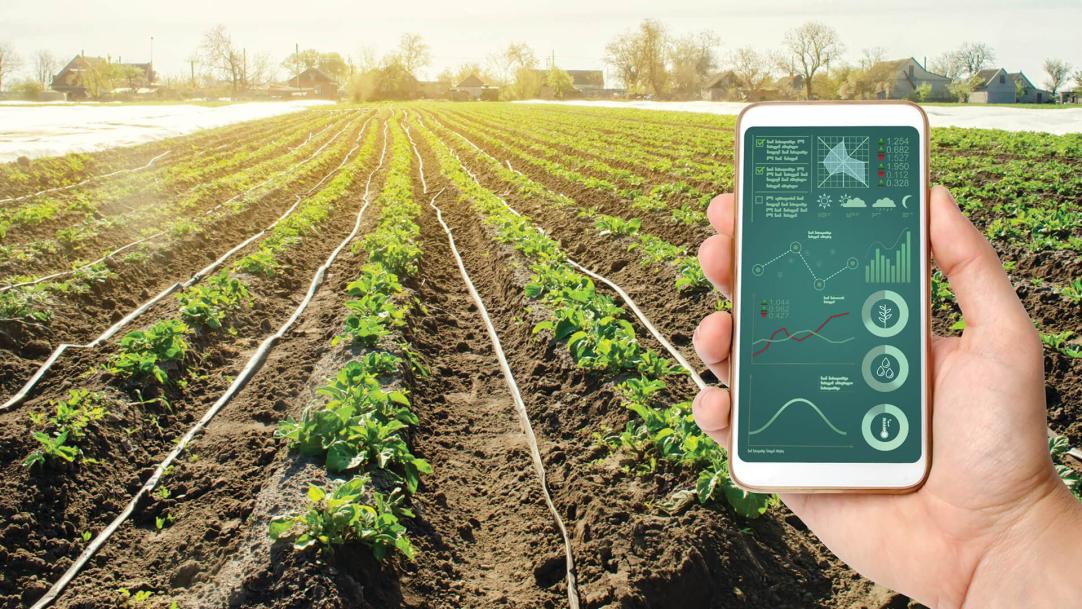Can AI Help Me Improve Crop Yields and Reduce Costs?
Farmers face numerous challenges in maximizing crop yields while minimizing costs. These challenges include:

- Unpredictable weather conditions: Weather conditions, such as droughts, floods, and extreme temperatures, can significantly impact crop yields.
- Pest and disease outbreaks: Pests and diseases can spread rapidly, causing extensive damage to crops.
- Rising input costs: The cost of fertilizers, pesticides, and other inputs has been steadily increasing.
- Labor shortages: Finding reliable and skilled labor is becoming increasingly difficult for farmers.
Artificial intelligence (AI) has the potential to revolutionize agriculture by helping farmers overcome these challenges. AI can be used to:
- Collect and analyze vast amounts of data: AI can collect data from various sources, such as sensors, drones, and satellite imagery, to gain insights into crop health, soil conditions, and weather patterns.
- Create variable rate application maps: AI can create variable rate application maps for fertilizers, pesticides, and irrigation, which can help farmers optimize resource allocation and minimize waste.
- Monitor crop health and predict yields: AI can continuously monitor crop health and identify potential problems, such as pests, diseases, and nutrient deficiencies. AI can also predict crop yields, which can help farmers make informed decisions about harvesting and marketing.
- Automate agricultural tasks: AI-powered autonomous machines and robots can perform various agricultural tasks, such as planting, harvesting, and weeding, which can save farmers time and money.
- Optimize the supply chain: AI can optimize the supply chain by analyzing market trends, predicting demand, and coordinating logistics. This can help farmers reduce transportation costs, improve inventory management, and better coordinate with distributors.
AI Applications In Crop Yield Improvement
Data Collection And Analysis
AI can collect and analyze vast amounts of data from various sources, such as sensors, drones, and satellite imagery. This data can be used to:
- Identify patterns and trends: AI can identify patterns and trends in data that are not discernible to the human eye. This information can be used to make better decisions about crop management.
- Develop predictive models: AI can develop predictive models that can be used to forecast crop yields, predict pest and disease outbreaks, and identify areas at risk of drought or flooding.
Precision Agriculture
Precision agriculture is a farming management concept that uses information technology to ensure that crops and soil receive exactly what they need for optimal health and productivity. AI can be used to implement precision agriculture by:
- Creating variable rate application maps: AI can create variable rate application maps for fertilizers, pesticides, and irrigation, which can help farmers optimize resource allocation and minimize waste.
- Monitoring crop health and predicting yields: AI can continuously monitor crop health and identify potential problems, such as pests, diseases, and nutrient deficiencies. AI can also predict crop yields, which can help farmers make informed decisions about harvesting and marketing.
Crop Monitoring And Prediction

AI can be used to continuously monitor crop health and identify potential problems, such as pests, diseases, and nutrient deficiencies. AI can also predict crop yields, which can help farmers make informed decisions about harvesting and marketing.
- Early detection of pests and diseases: AI can detect pests and diseases at an early stage, when they are easier to control. This can help farmers prevent significant crop losses.
- Accurate yield prediction: AI can predict crop yields with a high degree of accuracy. This information can be used to make informed decisions about harvesting and marketing.
AI Applications In Cost Reduction
Automation And Robotics
AI-powered autonomous machines and robots can perform various agricultural tasks, such as planting, harvesting, and weeding. This can save farmers time and money.
- Reduced labor costs: AI-powered machines and robots can work 24 hours a day, 7 days a week, without getting tired. This can help farmers reduce labor costs.
- Increased efficiency: AI-powered machines and robots can perform tasks more efficiently than humans. This can help farmers save time and money.
Supply Chain Optimization
AI can optimize the supply chain by analyzing market trends, predicting demand, and coordinating logistics. This can help farmers reduce transportation costs, improve inventory management, and better coordinate with distributors.
- Reduced transportation costs: AI can help farmers find the most efficient routes for transporting their crops to market. This can help farmers save money on transportation costs.
- Improved inventory management: AI can help farmers track their inventory levels and predict demand. This can help farmers avoid overstocking or understocking, which can both lead to lost profits.
- Better coordination with distributors: AI can help farmers better coordinate with distributors to ensure that crops are delivered to market on time and in good condition.
Energy Efficiency
AI can help farmers optimize energy usage by analyzing energy consumption patterns and identifying opportunities for improvement.
- Reduced energy bills: AI can help farmers identify ways to reduce their energy consumption, such as by using more efficient irrigation systems or by scheduling tasks to avoid peak energy demand.
- Smaller carbon footprint: By reducing energy consumption, AI can help farmers reduce their carbon footprint.
Challenges And Considerations
Data Privacy And Security
Concerns regarding data privacy and security are a major challenge for AI-driven agriculture. Farmers need to be assured that their data will be kept confidential and secure.
- Implementing robust data protection measures: Farmers need to implement robust data protection measures to safeguard their sensitive information.
- Educating farmers about data privacy and security: Farmers need to be educated about data privacy and security risks so that they can take steps to protect their data.
Technological Accessibility
Small-scale farmers may face challenges in accessing and utilizing AI technologies. These challenges include:
- Cost: AI technologies can be expensive to purchase and implement.
- Complexity: AI technologies can be complex to use and require specialized knowledge.
- Lack of access to infrastructure: Small-scale farmers may not have access to the necessary infrastructure, such as high-speed internet, to use AI technologies.
Solutions to address these challenges include:
- Government initiatives: Governments can provide financial assistance and technical support to help small-scale farmers adopt AI technologies.
- Partnerships with technology providers: Technology providers can partner with small-scale farmers to provide them with affordable and easy-to-use AI technologies.
- Farmer education programs: Farmer education programs can help small-scale farmers learn how to use AI technologies effectively.
Ethical Implications
The use of AI in agriculture raises several ethical considerations, including:
- Impact on employment: AI-powered machines and robots could displace human workers in the agricultural sector.
- Concentration of power: The use of AI in agriculture could lead to the concentration of power in the hands of a few large corporations.
- Environmental impact: The use of AI in agriculture could have unintended environmental consequences, such as increased pollution or soil degradation.
It is important to address these ethical concerns and develop policies to ensure that AI is used in a responsible and equitable manner.
AI has the potential to transform agriculture by improving crop yields, reducing costs, and addressing challenges faced by farmers. However, there are also challenges and considerations that need to be addressed. By working together, farmers, governments, technology providers, and other stakeholders can ensure that AI is used in a responsible and equitable manner to create a more sustainable and profitable agricultural sector.
YesNo

Leave a Reply